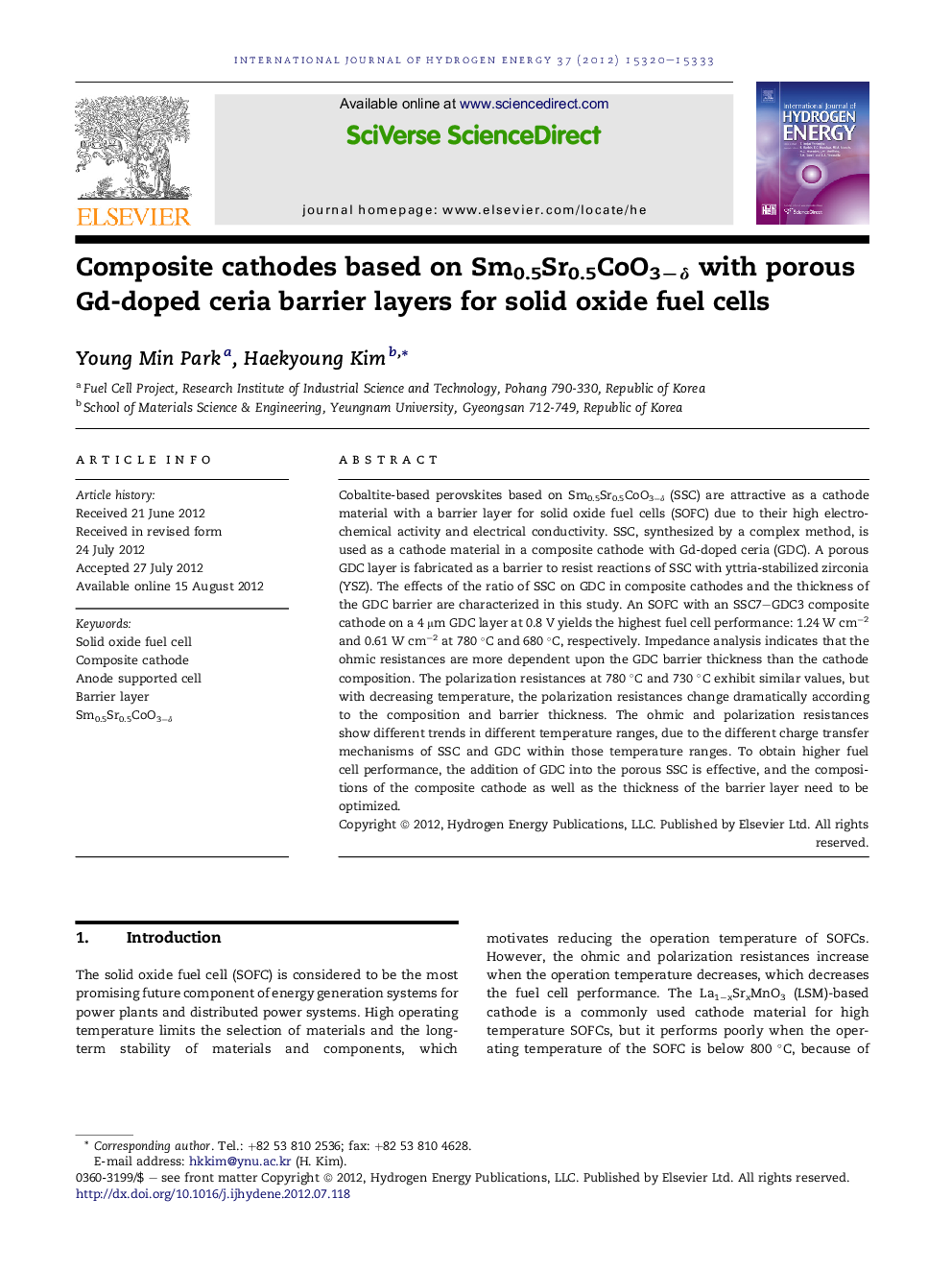| Article ID | Journal | Published Year | Pages | File Type |
|---|---|---|---|---|
| 1274539 | International Journal of Hydrogen Energy | 2012 | 14 Pages |
Cobaltite-based perovskites based on Sm0.5Sr0.5CoO3−δ (SSC) are attractive as a cathode material with a barrier layer for solid oxide fuel cells (SOFC) due to their high electrochemical activity and electrical conductivity. SSC, synthesized by a complex method, is used as a cathode material in a composite cathode with Gd-doped ceria (GDC). A porous GDC layer is fabricated as a barrier to resist reactions of SSC with yttria-stabilized zirconia (YSZ). The effects of the ratio of SSC on GDC in composite cathodes and the thickness of the GDC barrier are characterized in this study. An SOFC with an SSC7–GDC3 composite cathode on a 4 μm GDC layer at 0.8 V yields the highest fuel cell performance: 1.24 W cm−2 and 0.61 W cm−2 at 780 °C and 680 °C, respectively. Impedance analysis indicates that the ohmic resistances are more dependent upon the GDC barrier thickness than the cathode composition. The polarization resistances at 780 °C and 730 °C exhibit similar values, but with decreasing temperature, the polarization resistances change dramatically according to the composition and barrier thickness. The ohmic and polarization resistances show different trends in different temperature ranges, due to the different charge transfer mechanisms of SSC and GDC within those temperature ranges. To obtain higher fuel cell performance, the addition of GDC into the porous SSC is effective, and the compositions of the composite cathode as well as the thickness of the barrier layer need to be optimized.
► Sm0.5Sr0.5CoO3−δ (SSC) is used in a composite cathode with Gd-doped ceria (GDC). ► The effects of the ratio of SSC on GDC and GDC barrier thickness are characterized. ► An SSC7–GDC3 on a 4 μm barrier yields the highest power of 1.24 W cm−2 at 780 °C. ► Ohmic resistances are more dependent on barrier thickness than cathode composition. ► Ohmic and polarization resistances show different trends with temperature ranges.
